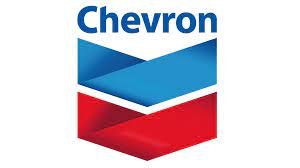$SNP
#Sinopec #EnergySector #ChinaEconomy #OilIndustry #ISOStandards #HeavyOil #Petrochemicals #OilInnovation #EnergyInvesting #GlobalStandards #Sustainability #MarketLeadership
Sinopec, officially known as China Petroleum & Chemical Corporation, has achieved a groundbreaking milestone by securing China’s first-ever ISO Technical Specification related to heavy oil development. This landmark approval was granted for the Technical Specifications for Multi-element Thermal Composite Flooding of Heavy Oil. The specifications were spearheaded by a team led by academician Sun Huanquan. The International Organization for Standardization (ISO) sets global benchmarks across industries, and Sinopec’s achievement underscores its technical leadership and innovation within the energy sector. As the development and efficient extraction of heavy oil become increasingly crucial in meeting global energy demands, this achievement places Sinopec ahead of its competitors on the global stage.
This advancement is likely to have significant implications for Sinopec’s financial future. ISO certification signals a seal of quality and technical superiority, potentially boosting investor confidence and paving the way for broader market opportunities. Being the first in China to land this certification could allow Sinopec to position itself as a preferred partner for international collaborations in heavy oil projects. Such global recognition may further enhance Sinopec’s operational scope, particularly as regulatory and environmental scrutiny intensifies. The oil and gas industry is increasingly prioritizing sustainability, and Sinopec’s push for innovation, especially in regions where heavy oil reservoirs are often underutilized due to technical barriers, reflects a forward-looking strategy.
The technical nature of the project also sheds light on Sinopec’s robust R&D expenditure. Heavy oil, known for its dense, viscous nature, poses significant extraction challenges. Sinopec’s use of composite thermal flooding, as described in the ISO-certified specification, represents a cutting-edge technique aimed at improving recovery rates and operational efficiency while minimizing environmental impact. Leveraging these advanced technologies could reshape heavy oil’s role within the global energy matrix, a development that may have wider market implications. For instance, the breakthrough could not only expand Sinopec’s reserves monetization but also reduce costs relative to peers who may lag in adopting similar advanced techniques. This could translate into an enhanced competitive advantage, especially among emerging markets with untapped heavy oil potential.
From a market perspective, industry players and investors alike will be closely monitoring how this innovation affects Sinopec’s profitability in the coming quarters and years. Historically, the heavy oil sector has faced obstacles such as high production costs and limited scalability. However, Sinopec’s achievement could signal a turning point, particularly as further deployment of its ISO-certified specifications could disrupt traditional extraction models. If Sinopec leverages its technological strength effectively, this could lead to broader adoption of advanced methods in heavy oil extraction across the global energy industry, thereby solidifying China’s role as a key innovator in the evolving energy landscape.











Comments are closed.